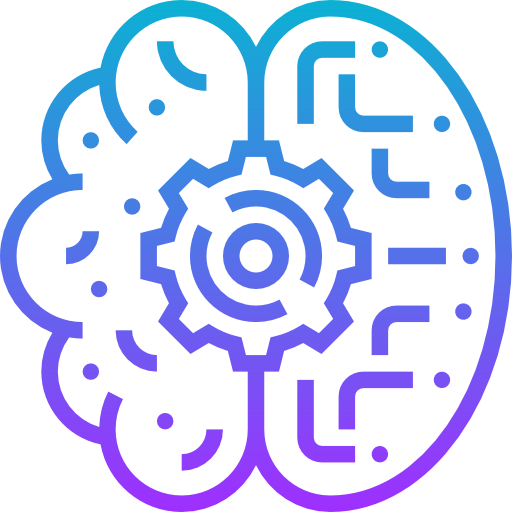Why Hospitals and Clinics Should Run their Local AI Setup, ChatGPT Alternatives?
By a Doctor, Developer, and AI Enthusiast Who Cares About Privacy, Efficiency, and Real-World Impact
Table of Content
The AI Revolution in Healthcare: It’s Not Just Cool—It’s Life-Changing
Let me start by saying this: Artificial intelligence isn’t some far-off sci-fi dream anymore. It’s here, right now, helping doctors diagnose diseases faster, assisting nurses with overwhelming paperwork, predicting complications before they happen, and even making sure patients get the care they need without delays. As someone who wears multiple hats—a doctor treating patients, a developer building tools to make life easier, and an AI nerd running my local AI club—I’ve seen firsthand how transformative this technology can be.
But there’s one thing that keeps bugging me: Most hospitals are still relying on cloud-based AI services like ChatGPT or other third-party models. Don’t get me wrong—they’re powerful tools. But when I worked with a hospital recently to set up their own “AI Studio” (basically, an in-house AI lab), it hit me hard: Why aren’t more healthcare institutions running their own local AI setups?
Here’s why I think every hospital and clinic should seriously consider taking control of their AI destiny—and trust me, you don’t need to be a tech wizard to pull it off.
Why Local AI? Because Your Patients Deserve Better
1. Privacy Matters: Keep Patient Data Where It Belongs
As a doctor, I take patient privacy very personally. Every time I see sensitive health information leave our hospital’s walls—even if it’s encrypted—it makes me uneasy. Laws like HIPAA and GDPR exist for a reason: People trust us with their most intimate details, from medical histories to family secrets. Sending that data to external AI providers feels… risky.
Running AI locally means no more API calls sending your data out into the wild. Everything stays within your hospital’s servers. You control who has access, how data is used, and what happens to it afterward. When I explained this to the IT team at the hospital I consulted for, they practically threw a party. They could finally implement security measures tailored to their exact needs instead of crossing their fingers and hoping some big tech company got it right.
And honestly? Patients deserve peace of mind knowing their data isn’t floating around somewhere outside the hospital. That alone is worth the effort.
2. Cost Efficiency: Stop Paying Through the Nose
Cloud-based AI subscriptions add up fast. Think about it: Every query, every analysis, every little task costs money. Multiply that across all the departments in a hospital—from radiology to administration—and suddenly you’re looking at a massive bill.
Running AI locally changes the game. Open-source models like MedPaLM 2, BioGPT, and Mistral can be deployed on your own hardware. Sure, there’s an upfront cost for GPUs and servers, but once you’ve got the setup, the recurring costs disappear. The hospital I worked with crunched the numbers: Within a year, they’d save enough to pay off the initial investment—and then some.
Plus, let’s face it: In healthcare, budgets are tight. If we can cut costs while improving outcomes, shouldn’t we?
3. Offline Access: Because Lives Depend on Reliability
Here’s a scenario that gives me chills: A doctor urgently needs an AI-generated summary during a critical moment, but the internet goes down. Or worse, the Wi-Fi slows to a crawl because too many devices are connected. What happens then?
Local AI doesn’t care about your Wi-Fi signal. It works offline, period. During my consultation, a radiologist told me, “We’ve had network issues before, and it’s chaos. With local AI, we can keep moving forward no matter what.” And she was absolutely right. In healthcare, reliability isn’t optional—it’s non-negotiable.

4. Customization: Make AI Work For You
Every hospital is unique. Some specialize in cardiology, others in pediatrics, oncology, or trauma care. Generic AI models trained on random internet data won’t always understand the nuances of your specific field.
With a local setup, you can fine-tune AI models using your own anonymized data. A pediatric hospital could train a model specifically on child health cases. A cancer research center could optimize AI to detect rare oncological patterns. This kind of customization is impossible with off-the-shelf solutions.
When I showed the hospital staff how they could tailor AI to fit their workflows, their eyes lit up. Suddenly, AI wasn’t just a tool—it was a partner in delivering better care.
5. Reducing Burnout: Give Doctors Back Their Time
If you’ve ever worked in healthcare, you know the burnout crisis is real. Between endless documentation, administrative tasks, and trying to stay updated on the latest research, doctors and nurses are stretched thin.
AI can help. Imagine an assistant that drafts clinical notes, summarizes patient histories, retrieves relevant research, and even structures spoken dictations—all securely within your hospital’s infrastructure. One of the doctors I worked with summed it up perfectly: “If I can shave off an hour of paperwork each day, I can spend more time with my patients and still go home to my family.”
That’s the kind of impact we’re talking about. Less stress, better care, happier staff. Win-win-win.
Best AI Models for Local Deployment: Powerful Tools You Can Use Today
So, which AI models should you look at for local deployment? Here are a few favorites from my AI Club experiments:
- MedPaLM 2 – By Google, Perfect for answering medical questions and supporting clinical decisions.
- BioGPT – A project by Microsoft, Ideal for analyzing biomedical texts and staying on top of research.
- Mistral – Lightweight yet powerful, easy to fine-tune for specific needs.
- Llama 3 – Versatile and customizable for various healthcare applications.
- Falcon LLM – Open-source and flexible, ideal for different clinical use cases.
These models run beautifully on high-end GPUs like NVIDIA A100/H100 or even smaller setups like RTX 4090s, depending on your budget. Trust me, you don’t need a Fortune 500 budget to make this work.
Hospitals That Ignore AI Will Get Left Behind
Let’s not sugarcoat it: AI is as revolutionary to healthcare as MRIs or electronic health records were in their time. Facilities that embrace it will thrive; those that don’t will struggle.
Think about it: If the hospital down the street starts using AI to streamline operations, improve diagnostics, and reduce wait times, where do you think patients will go? Faster service, better care, and smarter insights—that’s the future patients want.
Final Thoughts: Take Control of Your AI Future
If you’re reading this and haven’t thought about setting up a local AI system yet, now’s the time. Whether you’re a hospital administrator, a clinician, or an IT specialist, this is your chance to take ownership of AI instead of relying on outsiders.
The hospital I helped? They’re thriving. Their doctors have AI-powered assistants for patient data analysis, research support, and real-time decision-making—all while keeping costs low and data secure. They didn’t wait for permission; they built their own future.
So here’s my challenge to you: Stop asking “Should we use AI?” Start asking “Why aren’t we running our own AI already?”
Because your patients deserve it. Your staff deserves it. And frankly, so do you.











